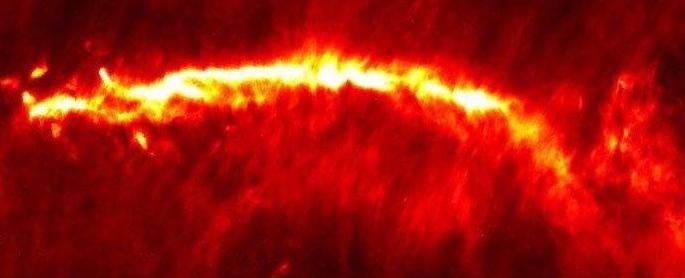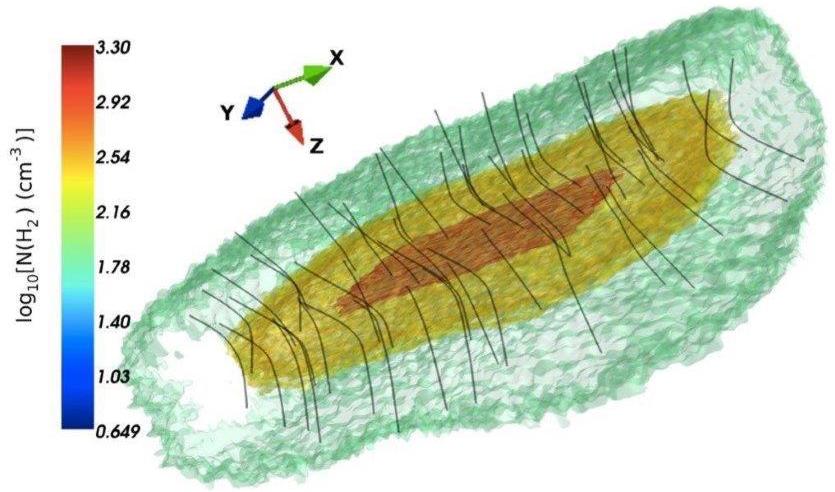The Musca molecular cloud: An interstellar symphony
Dr. Aris Tritsis and Prof. Konstantinos Tassis of the Department of Physics of the University of Crete have reported the first-ever discovery of normal modes in a molecular cloud, called Musca. This discovery has allowed the two researchers to precisely determine the physical dimensions of the cloud.

Molecular clouds can only be seen as two-dimensional projections on the plane of the sky with no way of knowing their true shapes. This is a fundamental constraint for studies of the interstellar medium, since the 3-dimensional (3D) structure of clouds encodes critical information regarding the physical processes that control the formation of stars and planets. Therefore, the determination of the 3D shape of clouds has been aggressively pursued through primarily statistical studies which however, have yielded contradictory results and do not provide information on a cloud-by-cloud basis.
Musca is an isolated cloud seen from the Southern hemisphere and it is one of the most ordered molecular clouds observed. The main dense structure of Musca, inside which stars will eventually form, is surrounded by hair-like structures called striations. In a previous study, also by Aris Tritsis and Konstantinos Tassis (Tritsis & Tassis 2016, MNRAS, 462, 3602), it was found that the only viable mechanism that could account for the formation of striations was through the excitation of magnetic pressure waves. However, in the case of the isolated Musca, the waves creating striations were trapped setting up normal modes.

Because of its needle-like appearance on the plane of the sky, Musca was considered to be the poster-child of an interstellar filament against which many theoretical models were put to the test. However, in contradiction to conventional wisdom the normal-mode analysis of striations has shown that Musca is in fact a sheet seen edge-on.
A video presenting a summary of the results of the paper is available here.
Musca is the first cloud found to be oscillating as a whole, and the largest structure in the Galaxy to which a normal-mode analysis has been successfully applied to date.
Article: “Magnetic Seismology of Interstellar Gas Clouds: Unveiling a Hidden Dimension", A. Tritsis, K. Tassis, Science 360, 6389, pp.635-638 (2018).
